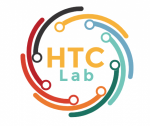Fostering public AI literacy (i.e. a high-level understanding of artificial intelligence (AI) that allows individuals to critically and effectively use AI technologies) is increasingly important as AI is integrated into individuals’ everyday lives and as concerns about AI grow. This paper investigates how to design collaborative, creative, and embodied interactions that foster AI learning and interest development. We designed three prototypes of collaborative, creative, and/or embodied learning experiences that aim to communicate AI literacy competencies. We present the design of these prototypes as well as the results from a user study that we conducted with 14 family groups (38 participants). Our data analysis explores how collaboration, creativity, and embodiment contributed to AI learning and interest development across the three prototypes. The main contributions of this paper are: 1) three designs of AI literacy learning activities and 2) insights into the role creativity, collaboration, and embodiment play in AI learning experiences.
static1.squarespace.com/static/53c69580e4b08011fc2337bf/t/60fec53322c5ce2ebdba8459/1627309392293/cc21a-sub6525-cam-i15.pdf
- How we (Anthropic) built our multi-agent research system - July 1, 2025
- Automatic Large Language Models Creation of Interactive Learning Lessons - June 29, 2025
- AI as Governance - June 29, 2025
